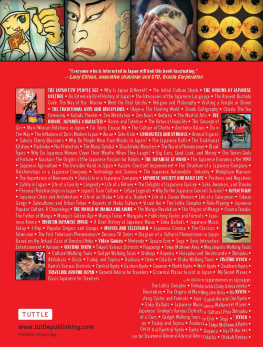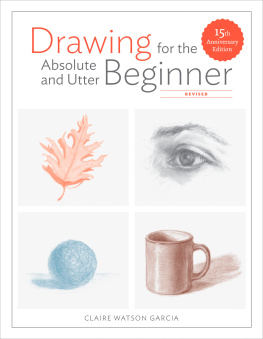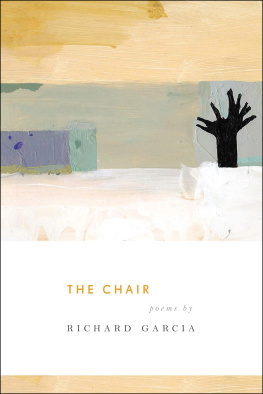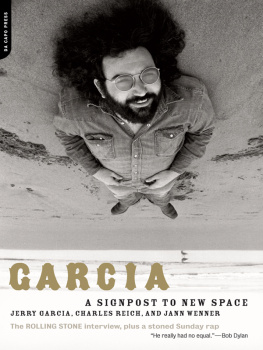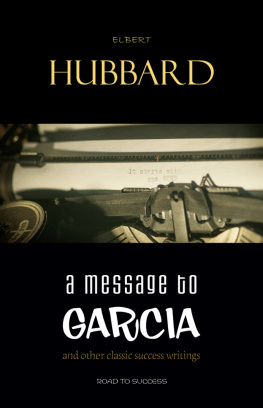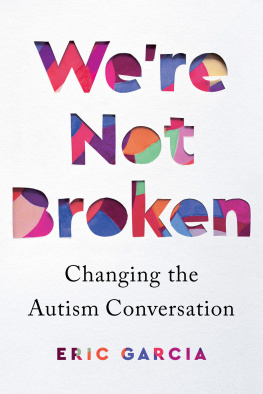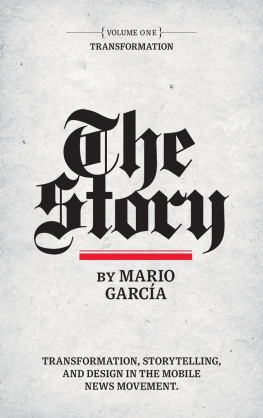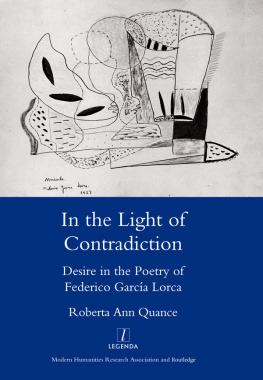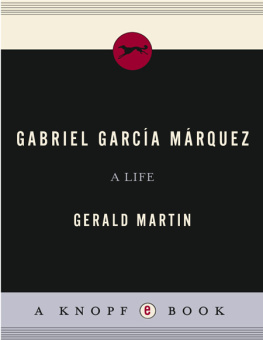Garcia - The Story: Volume II
Here you can read online Garcia - The Story: Volume II full text of the book (entire story) in english for free. Download pdf and epub, get meaning, cover and reviews about this ebook. year: 2019, publisher: Thane & Prose, genre: Home and family. Description of the work, (preface) as well as reviews are available. Best literature library LitArk.com created for fans of good reading and offers a wide selection of genres:
Romance novel
Science fiction
Adventure
Detective
Science
History
Home and family
Prose
Art
Politics
Computer
Non-fiction
Religion
Business
Children
Humor
Choose a favorite category and find really read worthwhile books. Enjoy immersion in the world of imagination, feel the emotions of the characters or learn something new for yourself, make an fascinating discovery.

- Book:The Story: Volume II
- Author:
- Publisher:Thane & Prose
- Genre:
- Year:2019
- Rating:3 / 5
- Favourites:Add to favourites
- Your mark:
- 60
- 1
- 2
- 3
- 4
- 5
The Story: Volume II: summary, description and annotation
We offer to read an annotation, description, summary or preface (depends on what the author of the book "The Story: Volume II" wrote himself). If you haven't found the necessary information about the book — write in the comments, we will try to find it.
The Story: Volume II — read online for free the complete book (whole text) full work
Below is the text of the book, divided by pages. System saving the place of the last page read, allows you to conveniently read the book "The Story: Volume II" online for free, without having to search again every time where you left off. Put a bookmark, and you can go to the page where you finished reading at any time.
Font size:
Interval:
Bookmark:

The Story 2019 Mario Garca
Published by Thane & Prose, New York
All rights reserved. Printed in the United States of America.
No part of this book may be used or reproduced in any manner whatsoever without written permission except in the case of brief quotations embodied in critical articles and reviews.
First Edition
Book cover and interior design by Garca Media
Art Director Paula Ripoll
Illustrations Jeff Goertzen
Cover typeset in Deutsche Gothic Regular, interior pages typeset in Bembo Std.
ISBN 978-0-578-58529-1
ISBN 978-0-578-59224-4 (e-book)

CONTENTS

Storytelling

The story as protagonist
BY MARIO R. GARCA
T he story is the reason for all we do. It is why our audience comesand hopefully stays.
In my four-decade career as a visual journalista term I prefer to newspaper designerI have always had it clear that we exist to make sure that the story is accessible, easy to read, and easy to find. I fortunately never fooled myself for a moment that design could alter the reception of a story that simply did not have some of those essential determinants such as consequence, human interest, proximity, timeliness, significance and prominence.
About a decade into my careerwhile already working in newsrooms where I would appear as the design consultant hired to redesign a newspaper, in the traditional sense: change the typographic and color palette, create a dynamic look for the front page, and perhaps even redesign the newspapers logo (nameplate)I came to the conclusion that there could be no good design unless there was a marriage of the three main disciplines of writing, editing, and design. That is how the WED concept was born. It still serves me well as I help prepare the next generation of storytellers.
What is WED?
As I recall it, and as I told the story in my book Newspaper Evolutions (Poynter, 1997), I must have been working on my 70th redesign project (circa 1987) when the realization hit me while flying. Why were some redesign projects more successful than others? The answer came to me above the clouds: A newspaper that includes a thorough integration of writing, editing, and design (WED) into everything it addresses during a redesign enjoys better results than one in which a redesign simply targets cosmetic or graphic aspects.
It was my project with The Philadelphia Inquirer that stays in my mind as the birth of the WED concept. On my first day in residence at The Inquirer , the editor, Max King, ushered me to a room where all the newspapers awards, including Pulitzer Prizes , were on display.
Take a look here, Mario, he said, towering over me. We are proud to be a story driven newspaper. We are text oriented. The words are important to us. Whatever you do with the look of The Inquirer , how you handle the addition of colormake sure you dont forget that.
Of course, I didnt.
Not just for The Inquirer project, but for every project after that. That was a wow moment for me. It defined how I worked and how I taught our craft forever.
It still does today!
As a result, I incorporated writers and copy editors more fully into the process of every redesign, and still continue to do it today, as we rethink newsrooms and move across platforms. I knew that good design would evolve from good words. Content is king; design packages it to make it appealing and easier to digest.
When writing, editing, and design come together well, it is pure bliss on the page or the screen. One can hear the bells chime.
It was because of WED that I developed story structures as the first step towards a successful redesign. And I am happy to say that today, as we write news for mobile consumption, story structures that expedite reading and keep us reading on small screens are key. We hope to offer many of those as examples here.
iWED today
iWED, as I now refer to the concept is, about integration and planning. The effective editor is going to analyze stories for their potential in each platform: perhaps an alert for the phone, an expansion and/or update online, then the more interpretative and visual aspects of the story for print and the tablet. One may add that today the concept of WED takes greater importance because the three disciplines must be more carefully coordinated to perform differently in the various platforms.
WED is also dependent on newsroom structures. As long as we see writing as one department, editing as another, and design as a floating island on another floor, then we have no WED potential, as I wrote in Newspaper Evolutions.
Today, we can add that for WED to be successful and sustainable in a multiplatform worldthink media quintet herewe must see the various platforms as being part of one seamless operation where the story comes first. Perhaps for me, WED is more important today than it was about 600 projects ago when I conceived it.
Three WED tips in a mobile first world
1. Include the writer, editor, and designer as you plan how a story will be presented.
2. Let the specific characteristics of each platform determine how the writing, editing, and design of the piece are carried out. Develop and update the story in a variety of storytelling techniques.
3. Let WED serve as the springboard to multisensory treatments: audio, video, and podcasts.
Philosophy is meant to be all-inclusive, and breaks down like this:
The W
The W comprises not only writing but research and reporting of stories as well as headlines, subheads, captions, promos, and at-a-glance boxes.
The E
The E comprises not only editing but coordinating and making sense of all the raw materials of journalism. This includes making connections among various parts of a news product, such as promos from the front page of a paper or links in an online service.
The D
The D comprises not only design, but photography, art and illustration, as well as color, typography, and informational graphics.
WED has guided thousands of journalists and designers over the past three decades. It is rooted in the essential foundations of good journalistic practices.
We chase stories
One of the most major differences in newsroom strategy between the time I created the WED concept and today is that today we chase stories, rather than spend our time concentrating on editions in the tradicional sense.
Stories have lives of their own, some with longer legs than others. Newsrooms where editors are aware of how we consume news today understand that the notion of frequency is important. Readers are not necessarily waiting for tomorrows newspaper or next weeks magazineor even tonights evening news. Instead, they curate their own content, jumping from one provider to the next: I may read arts and entertainment here, news about Latin America there, and still come to three other titles for different information.
Not only are readers not waiting for tomorrows newspaper, they are checking their smartphones for long stretches of time.
Next pageFont size:
Interval:
Bookmark:
Similar books «The Story: Volume II»
Look at similar books to The Story: Volume II. We have selected literature similar in name and meaning in the hope of providing readers with more options to find new, interesting, not yet read works.
Discussion, reviews of the book The Story: Volume II and just readers' own opinions. Leave your comments, write what you think about the work, its meaning or the main characters. Specify what exactly you liked and what you didn't like, and why you think so.

